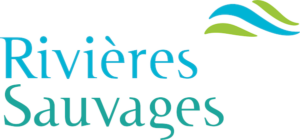The Artoise River
Description of the drainage basin and river
Rising near Chimay in Belgium, the Artoise flows towards the Thierache region and joins the Gland in the Saint-Michel forest.This waterway is unique because a section of it runs along the border between Belgium and France, with Belgium on the right bank and France on the left bank.
The Artoise is one of the last “relics” of the Aisne administrative department. Its upper section, running along 9km, is in excellent environmental condition, which can be explained by its geology and the forest zone covering the valley bottom which helped preserve the river.The Belgian section (around 4.5 km) crosses countryside that features greater proportions of farmland, and a traditional Trappist brewery.This section features a number of disturbances that negatively affect the “wilderness” of the environment.Our Belgian neighbours are in strong support of expanding the label to their section.Local initiatives should help preservation projects to be set up in the upper section of the Artoise, most likely as part of an Inttereg-type project in France and Belgium.
The river’s winding course forks at several points, thereby forming closely-connected environments that would be favourable to lentic environment species such as the fire salamander and the palmate newt.The brown trout, European bullhead and invertebrates such as the Amphinemuraborealis (here is the only site in France where it is found) are the most emblematic species on this river.The unspoiled alluvial zone is home to a variety of remarkable bird species, such as the black stork, black woodpecker and the white-throated dipper.
A cross-border federation of private and public actors
The Aisne Federation for Fishing and the Protection of the Aquatic Environment (FAPPMA), which aims to develop fishing and protect and promote aquatic environments, is responsible for coordinating the project to seek a “Wild Rivers” label for the Artoise river. The federation is assisting the AAPPMA for the Gland, Artoise, Ton and Oise river valleys for the heritage management of the river’s path.
The French National Forests Bureau (ONF) ensures that the Saint-Michel forest is sustainable managed, and their management strategy focuses on environmental protection rather than wood production. The National Forests Bureau manages over 80% of the territory seeking the label. Forest management is carried out with respect to the quality of the Wild Rivers-approved drainage basin. The ONF is a partner in the action plan alongside the FAPPMA.
The GoodPlanet Belgium association plays a significant role in the project. This Belgian association develops and manages projects, educational courses and tools on environmentally-related themes. It also has a well-developed network and would be an asset in rallying actors and resources in Belgium. GoodPlanet will act as the intermediary link between the various Belgian participants and the coordinator of the labelling project in order to ensure coherent, all-round management. These initiatives should ultimately result in the Belgian section of the Artoise being approved for the Wild Rivers label, as well as other cross-border waterways in the country.
Action plan
The action plan established in line with the Wild Rivers label programme for the Artoise prioritises river conservation. The plan has three key focus points, incorporating activities of a scientific nature and wildlife management, with environmental, society -and economy- related aspects.
- Governance and management of the label certification programme: coordination of the actors and activities on the approved site, expansion of the label to include the Belgian territory, development of various partnerships and development of the territory.
- Conservation: ecological conservation monitoring of environment quality, monetary valuation of the ecosystem services, viability analysis of the brown trout population, awareness campaign of the drainage basin activities, fishing management, educating the public and actors on the territory of the need to conserve the unspoilt natural environment.
- Restoration: restoring the black spots identified upstream, restoring the ecological continuity of the tributaries and fighting against invasive species (signal crayfish).
Environmental monitoring is new to the territory. These measures will preserve the environment. For example, setting up ecological conservation monitoring, tailored to the characteristics of the drainage basin, will help better anticipate pressures and prevent possible damage by monitoring the environment’s quality, with the aim of preserving the ecological quality of the drainage basin.


